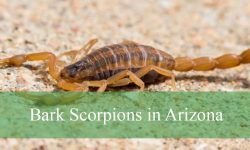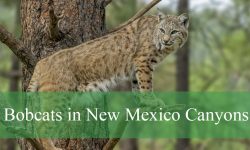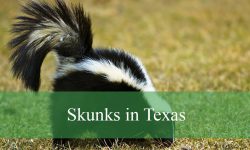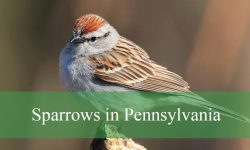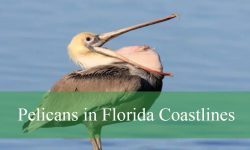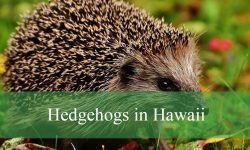North Carolina is home to a fascinating variety of wildlife, and among its most intriguing nocturnal residents are skunks. These small carnivores are easily recognized by their striking black-and-white coloration and distinctive defensive behaviors. While often misunderstood due to their notorious spray, skunks play an important role in controlling insects and small rodent populations. In this guide, we’ll cover the three main types of skunks found in North Carolina, providing detailed descriptions, identification tips, habitat preferences, behavior, diet, and fun facts for each species.
Skunks are often spotted near forests, fields, and even suburban neighborhoods. Despite their reputation, they are generally shy and non-aggressive unless provoked. Observing skunks from a safe distance can be an exciting wildlife experience, offering insight into their nocturnal habits, foraging behaviors, and unique ways of defending themselves. For nature enthusiasts, understanding these animals is crucial to appreciating their ecological importance while minimizing unwanted encounters.
Here’s a helpful overview of the three skunk species you may encounter in North Carolina. Each has distinct physical features and behaviors, making them relatively easy to identify once you know what to look for. From the common striped skunk to the elusive eastern spotted skunk and the rare hog-nosed skunk, North Carolina’s skunk population is diverse and ecologically significant.
Different Types of Skunks Found in North Carolina
Striped Skunk (Mephitis mephitis)
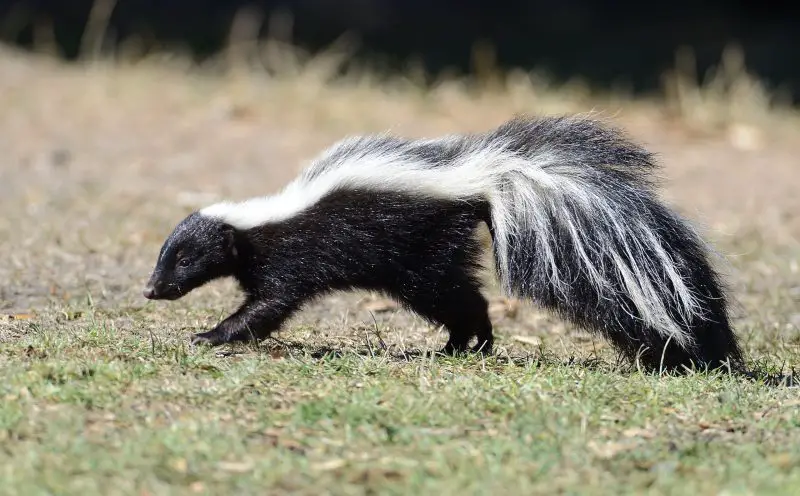
The Striped Skunk is the most recognizable skunk species in North Carolina, easily identified by its black fur contrasted with two prominent white stripes running from its head down to the tail. Adult skunks typically measure 20 to 31 inches in length, including their bushy tails, and weigh between 4 and 10 pounds. Their thick fur helps insulate them during North Carolina’s cooler months, while their distinct coloration serves as a warning to potential predators. The face of a striped skunk is often black with a white blaze on the forehead, which can vary in width and shape among individuals.
Behaviorally, striped skunks are primarily nocturnal, becoming most active at night while foraging for food. They are omnivorous, feeding on insects, small mammals, fruits, and plant matter, which allows them to adapt well to suburban areas, farmlands, and forests throughout the state. When threatened, they display characteristic warning behaviors such as stamping their feet, hissing, and raising their tails before releasing a strong, pungent spray from their anal glands—a defense mechanism that deters even large predators.
Striped skunks are adaptable to a variety of habitats in North Carolina, from rural woodlands to urban backyards. They often make dens in burrows, hollow logs, or under buildings, which they line with dry leaves or grass. During winter, they may enter a period of torpor but do not truly hibernate, allowing them to emerge on warmer nights to forage. Their wide distribution across the state makes them the most commonly encountered skunk by residents and wildlife watchers alike.
A fun fact about striped skunks in North Carolina is that despite their notorious odor, they play a vital ecological role by controlling insect populations, including crop-damaging pests. Their tendency to forage near human habitation can lead to garden predation, but they also help reduce ticks and other insects that carry diseases, making them an important part of the ecosystem.
Eastern Spotted Skunk (Spilogale putorius)

The Eastern Spotted Skunk is smaller and more slender than the striped skunk, typically measuring 14 to 20 inches in length with a weight ranging from 1 to 3 pounds. Its black fur is marked with broken white stripes and spots along the back and sides, giving it a distinctive “spotted” appearance. Its tail is bushy and often tipped in white, and the facial pattern usually includes white patches near the eyes and nose. This skunk’s smaller size and agile build allow it to climb trees and fences, a behavior not commonly seen in striped skunks.
Eastern spotted skunks are also nocturnal and have a unique defensive behavior: when threatened, they perform a handstand on their front legs with their tail raised, warning predators before spraying. Their diet is diverse, including insects, small rodents, fruits, eggs, and even carrion. This varied diet allows them to thrive in North Carolina’s forests, fields, and edge habitats, though they are less commonly seen near urban areas compared to striped skunks.
These skunks prefer habitats with ample cover, such as dense brush, hollow logs, or abandoned burrows. They are excellent climbers and may use trees to escape danger or reach food sources. While historically more abundant, eastern spotted skunks have seen population declines in parts of the U.S., making sightings in North Carolina relatively rare, especially compared to the striped skunk. Conservation efforts and awareness of their ecological role are important to maintain their populations.
A fun fact about eastern spotted skunks in North Carolina is that their spotted coat provides camouflage in wooded and grassy areas, making them harder to spot by predators—and humans. They are often more elusive than their striped relatives, which has earned them the nickname “dancing skunks” because of their unique handstand warning display.
Hog-nosed Skunk / Western Spotted Skunk (Spilogale gracilis – historically referenced)
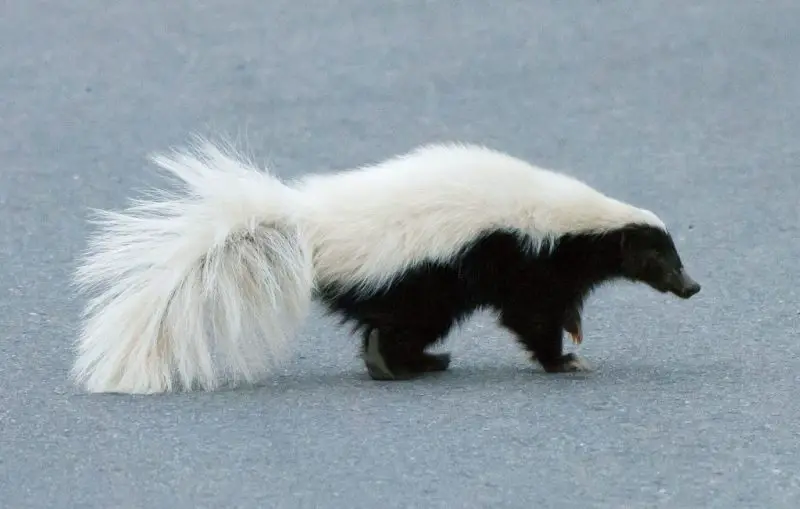
The Hog-nosed Skunk, historically categorized as the Western Spotted Skunk, is extremely rare in North Carolina, with most confirmed sightings closer to the western United States. This small skunk shares similarities with the Eastern Spotted Skunk, including a slender body, black fur with broken white stripes and spots, and a bushy tail tipped in white. Adults typically measure 14 to 18 inches in length and weigh between 1.5 and 3 pounds, making them one of the smallest skunk species. Their name comes from their slightly elongated, pig-like nose, which helps them forage effectively in the soil for insects and grubs.
Behaviorally, hog-nosed skunks are nocturnal and secretive. They feed on insects, small vertebrates, fruits, and eggs, much like other spotted skunks, but they rely heavily on digging to locate food, using their strong forelimbs and sensitive snouts. When threatened, they can perform the characteristic handstand and spraying behavior, although their secretive nature means they are rarely encountered by humans in North Carolina.
Habitat preferences include open woodlands, rocky outcrops, and brushy areas where they can easily hide during the day. They often den in abandoned burrows, rock crevices, or thick vegetation. Due to their rarity in North Carolina, there is limited data on their exact distribution, but they are occasionally recorded near the western edges of the state in regions that provide ample cover and foraging opportunities.
A fun fact about hog-nosed skunks in North Carolina is that their specialized nose allows them to detect insects underground with remarkable accuracy, giving them an advantage over other small carnivores. Despite their elusive nature, these skunks contribute to controlling insect populations, just like their more common relatives, making them an underappreciated part of the state’s ecosystem.
FAQs About Skunks in North Carolina
What types of skunks are found in North Carolina?
North Carolina is home to three main skunk species: the Striped Skunk (Mephitis mephitis), the Eastern Spotted Skunk (Spilogale putorius), and the rarely seen Hog-nosed Skunk / Western Spotted Skunk (Spilogale gracilis). The striped skunk is the most common, while the eastern spotted skunk is smaller and more elusive.
How can I identify a skunk in my yard?
The Striped Skunk is black with two prominent white stripes running from head to tail. The Eastern Spotted Skunk has broken white stripes and spots along its back and sides, with a smaller, slender body. The Hog-nosed Skunk looks similar to the eastern spotted skunk but has a slightly elongated, pig-like nose.
Are skunks dangerous to humans or pets?
Skunks are generally not aggressive but will spray when threatened. Their spray can irritate skin and eyes and leave a strong odor. Skunks can also carry diseases like rabies, so it’s important to keep pets and children away from them.
What do skunks eat in North Carolina?
Skunks are omnivorous. They eat insects, small mammals, fruits, eggs, and plant material. They are also helpful for controlling pests in gardens and farms, as they consume a large number of insects and grubs.
Where do skunks live in North Carolina?
Skunks can adapt to a variety of habitats. Striped skunks are common in forests, fields, and urban areas, while eastern spotted skunks prefer dense brush, woodlands, and forest edges. Hog-nosed skunks are extremely rare and favor open woodlands and rocky areas in the western part of the state.
How can I keep skunks away from my property?
To discourage skunks, secure trash bins, remove pet food from outdoors, and seal potential den sites under decks or sheds. Motion-activated lights or sprinklers can also help deter nocturnal visitors.
Can skunks be relocated safely?
Relocating skunks is challenging and often requires professional wildlife control due to their defensive spray and risk of disease. In many cases, it’s safer to use preventive measures to keep skunks away rather than attempting relocation.

